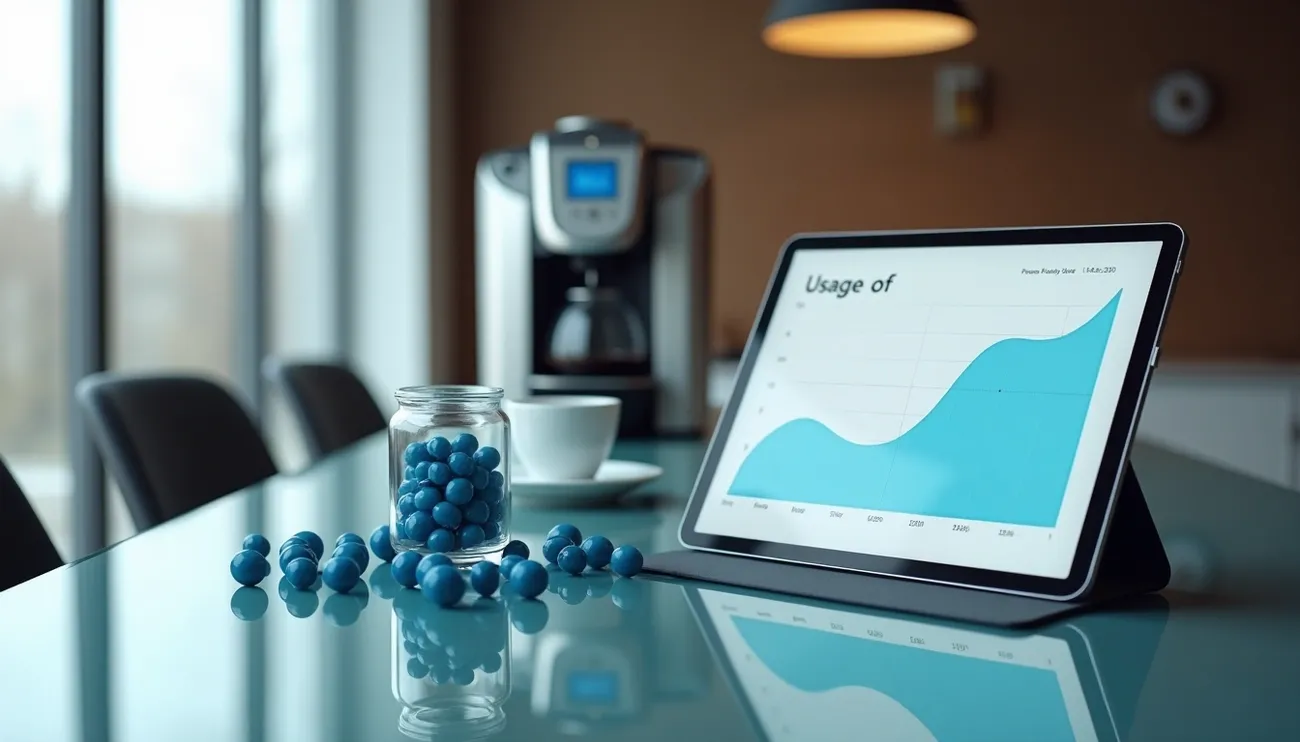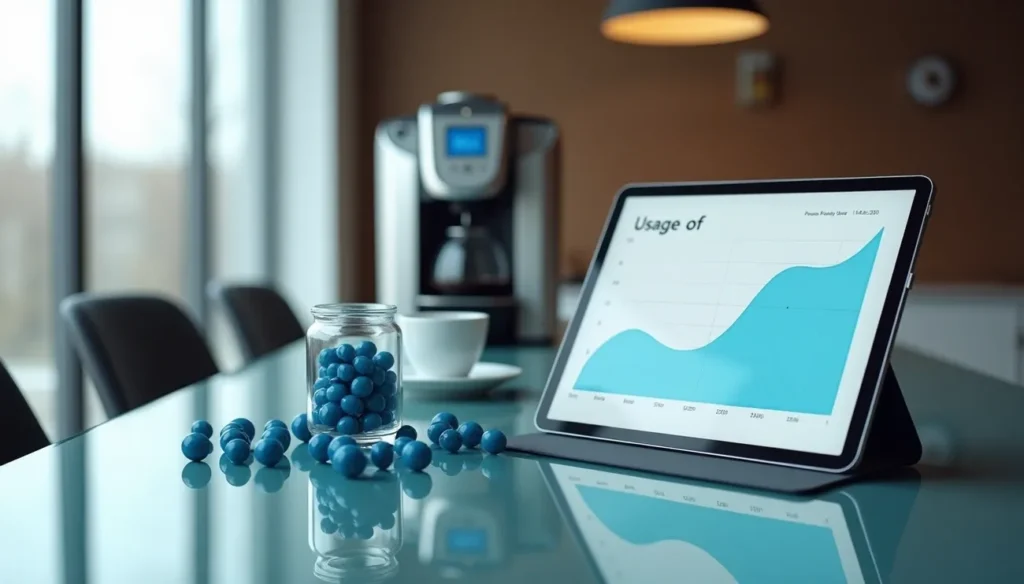The Hidden Benefits of Usage Based Pricing Your Competitors Don’t Know

Companies adopting usage-based pricing models have grown from 9% to 26% between 2020 and 2022. This represents more than just another trend – it marks a transformation in how businesses charge for their products and services.
A well-executed usage-based pricing strategy can give businesses a competitive edge. The approach leads to lower sales costs and makes it easier for new customers to get started. Research shows that 80% of customers feel this pricing method better matches the value they get. Traditional subscription models fall short here. The consumption-based approach creates a natural link between value and cost, so customers can start small and pay only for what they use.
Let me get into the hidden benefits of consumption pricing that your competition might have missed. Companies of all sizes see higher year-over-year ARR growth by combining this with other pricing approaches. On top of that, I’ll explain practical ways to implement this strategy. This becomes crucial as global data consumption heads toward 147 zettabytes by 2024.
What is usage-based pricing and why it matters
Usage-based pricing lets customers pay only for what they use. This simple approach connects costs directly to actual usage – whether API calls, gigabytes of data, or tokens in an AI system.
How usage-based pricing is different from subscriptions
Subscription models charge a fixed recurring fee no matter how much customers use. Usage-based models tie costs to the value customers receive. This creates several key differences:
- Transparency: Customers see exactly what they pay for with usage-based pricing. There are no hidden fees or surprise charges when billing cycles end.
- Scalability: Solutions that work well allow customers to scale up as needed. They can also scale down without paying for unused applications.
- Financial effect: Subscription models give providers predictable revenue. But usage-based models result in higher net dollar retention—about ten percentage points above traditional subscription approaches.
Vendors face revenue uncertainty with usage-based pricing since customers can adjust their usage levels quickly.
The rise of the consumption pricing model in SaaS
SaaS companies have adopted consumption-based pricing faster than ever. Recent data shows 67% of SaaS companies now use usage and consumption-based pricing—up sharply from 52% in 2022.
Several factors drive this growth:
- Modern SaaS consumption metrics have evolved beyond simple usage units. They now include “derivative” metrics like tokens and credits that work as virtual currency.
- Companies can reduce seat licenses as AI handles more background tasks. This puts pressure on traditional subscription models.
- New technologies (automation, AI, and APIs) work better with usage-based approaches than seat-based pricing.
Common usage-based pricing examples
Many companies have found success with different types of usage-based pricing:
Snowflake’s pricing has two main parts: compute usage for processing power and storage usage for data volume.
AWS led the way in consumption-based billing with its pay-as-you-go model. Customers pay for exactly what they use in storage, computing power, or bandwidth.
Twilio charges based on message count or calls made through its communications API. Their structure follows a pay-per-message or call model.
These examples show how different industries adapt usage-based models to match their value propositions and customer needs.
8 hidden benefits of usage-based pricing
The usage based pricing model offers several hidden benefits that give businesses a competitive edge. These advantages go beyond what meets the eye:
1. Attracts budget-conscious startups
Companies can start with minimal investment because consumption based pricing removes high original costs. This works great for startups and smaller companies that want to grow at their own pace. The pay-as-you-grow approach lets businesses scale their usage naturally as they expand.
2. Promotes product-led growth
Usage-based pricing creates the foundations for product-led growth strategies. Delivering value faster with low original cost helps win customers in today’s end-user era. Companies that use this pricing approach often reach $100M+ ARR because of better CAC payback and net dollar retention rates.
3. Reduces customer acquisition friction
Customers feel more confident when they pay based on what they use instead of signing long-term contracts. This model removes buying resistance by keeping original financial commitments low.
4. Lines up pricing with customer success
Customer success becomes a revenue driver when pricing connects directly to value or usage. Companies that link pricing to customer success metrics show 21% higher net revenue retention compared to standard pricing approaches.
5. Creates natural upsell opportunities
Usage-based pricing makes expansion happen without heavy sales efforts, unlike fixed subscription tiers. Businesses that use consumption data to spot expansion opportunities grow 2.5x faster.
6. Builds trust through transparent billing
Customers understand their usage better with clear, available billing structures. About 31% of SaaS companies now give itemized invoices with live usage tracking. This reduces billing disputes and deepens their commitment to long-term relationships.
7. Handles seasonal or changing usage patterns
The usage based revenue model gives businesses flexibility when demand changes. Customers can adjust their usage during quiet periods without leaving the service.
8. Reveals valuable features through usage data
Usage patterns show how customers interact with your product. This information helps improve product development and refine sales strategies over time.
Real-world examples of hidden benefits in action
Top companies are seeing amazing results as they roll out the usage based pricing model in ways that reveal its hidden benefits. Their stories show us practical ways to make consumption-based approaches work.
How Snowflake uses usage data to stimulate expansion
Snowflake’s data warehousing platform shows how consumption pricing creates perfect customer alignment. They charge based on storage used and compute power consumed (measured in credits), which creates a natural “land and expand” motion. This strategy helps Snowflake keep its net revenue retention rates above 170%. Customers spend more as they get more value, without much extra sales effort. New prospects can start small and scale up their commitment when ready.
Twilio’s hybrid model and customer flexibility
Twilio blends different pricing approaches to meet customer needs. Their system lets customers choose from four options: pay-as-you-go, volume discounts, committed-use discounts, or mix these approaches. This hybrid approach balances consumption pricing flexibility with subscription stability. To cite an instance, their SMS product bases charges on messages sent and received. This creates clear cost alignment with actual usage while guaranteeing a 99.95% uptime SLA.
Zapier’s task-based pricing and user retention
Zapier’s pricing changes show how usage-based models can turn things around. The team learned from customer feedback and made three key changes: they removed zap limits on all plans, made utility steps free, and added pay-as-you-go options beyond included limits. The results were impressive. Usage went up after two years of decline. Churn fell sharply while metered revenue jumped. Customer complaints about pricing dropped by a lot. Zapier built a stronger growth engine by putting customer trust first instead of short-term gains.
How to unlock these benefits in your own pricing model
Implementing a successful usage based pricing model needs strategic planning and customer-focused execution. Here’s how to tap into its full potential:
Choosing the right value metric
The foundation of usage-based pricing that works starts with metrics that relate to customer value. Your original focus should be metrics that are simple, transparent, and grow with your customer’s success. You should think about technical metrics like API calls or storage, transactional metrics like messages sent, or ideal value-based metrics tied to business outcomes. Keyfactor’s choice of “certificates issued” as their core metric improved retention after they found poor results with unlimited usage.
Segmenting customers by usage behavior
The quickest way to price differently involves segmenting customers based on their actual usage patterns instead of revenue contribution. Statistical methods help identify behavioral patterns when you have thousands of customers. This bottom-up approach builds compelling value propositions because segmentation shows real customer behavior.
Using analytics to refine pricing over time
Your pricing strategy needs continuous experimentation to stay optimized. Research shows companies should test regularly, run A/B splits, try model variations, and use specific tactics that line up with their business stage. The core team should coordinate regular check-ins between sales, product, and finance to assess structure and make adjustments.
Avoiding common implementation mistakes
The biggest problem starts with preventing “surprise bills” – customers need transparent billing and usage tracking. Additional pitfalls include choosing metrics that don’t align, creating unpredictable costs, and developing overly complex models. Your model becomes too complicated when customers need a spreadsheet to understand their bill. Simple approaches and tools like budget alerts or spending caps help build trust.
Conclusion
Usage-based pricing represents a fundamental change in business monetization strategies. This model lines up customer costs with the value they receive. Traditional subscription approaches cannot match its transparency and flexibility. Companies using this pricing strategy see ten percentage points higher net dollar retention than their subscription-only counterparts.
These advantages give businesses a strong competitive edge. Startups with tight budgets can now access solutions they couldn’t afford before. Products grow faster because customers experience value before making big investments. Customers face less friction since they only pay for what they use. The pricing structure naturally leads to more sales without heavy involvement from the sales team.
Snowflake, Twilio, and Zapier’s success stories prove these benefits in ground applications. Their examples show how usage-based models promote customer trust. The models adapt to seasonal changes and give valuable product usage insights that shape development decisions.
Your business can realize these advantages through smart implementation. The right value metric is the life-blood of an effective strategy. Customer segments based on behavior patterns instead of random categories make pricing more precise. Live analytics help your model grow among customer needs.
More businesses will move toward usage-based pricing as it meets modern customer expectations. Companies that grasp and use these benefits gain the most important competitive advantages in customer acquisition, retention, and growth. Pricing that grows with customer’s success creates a natural partnership that helps both sides in the long run.





